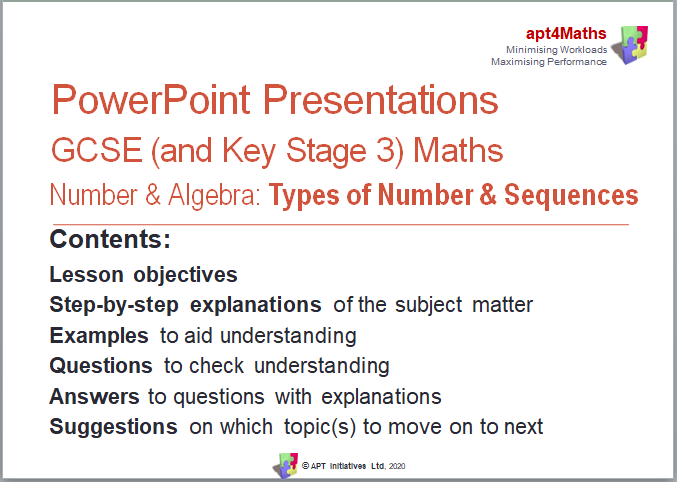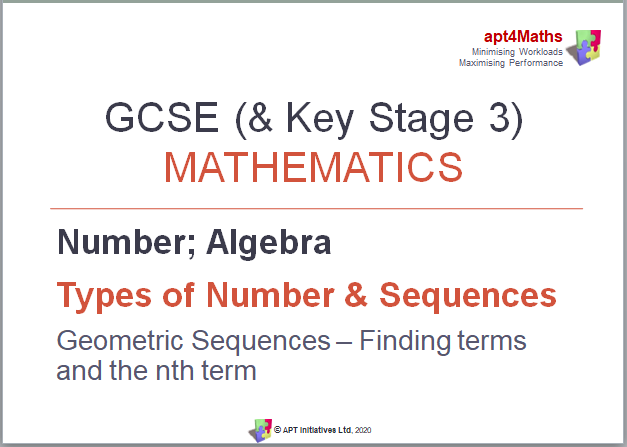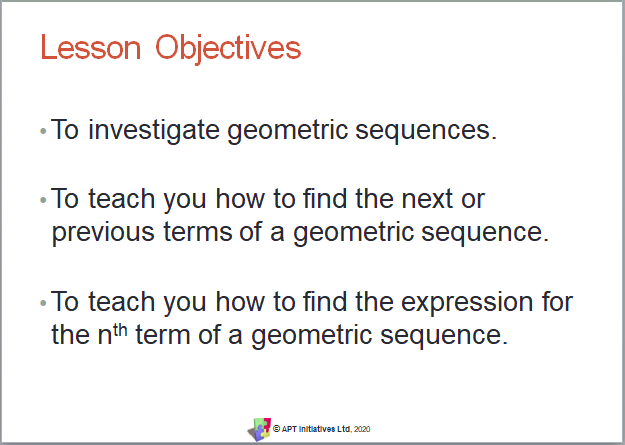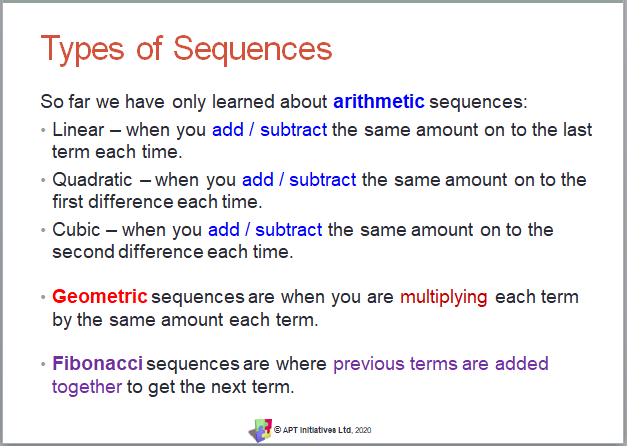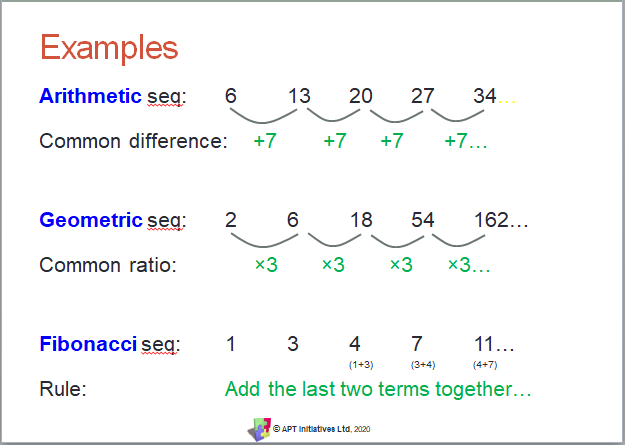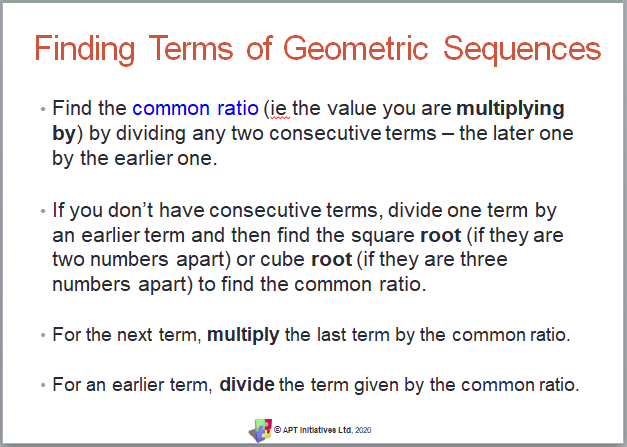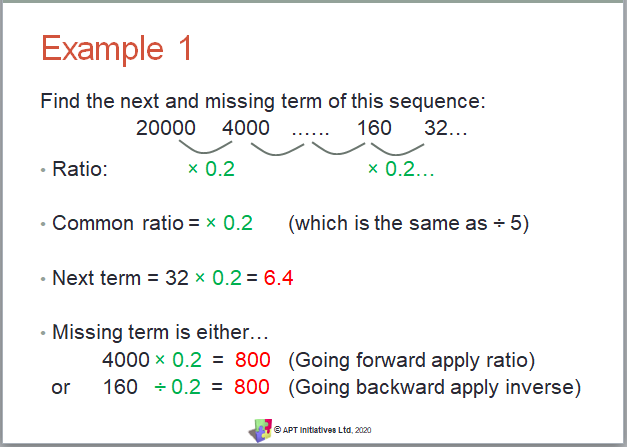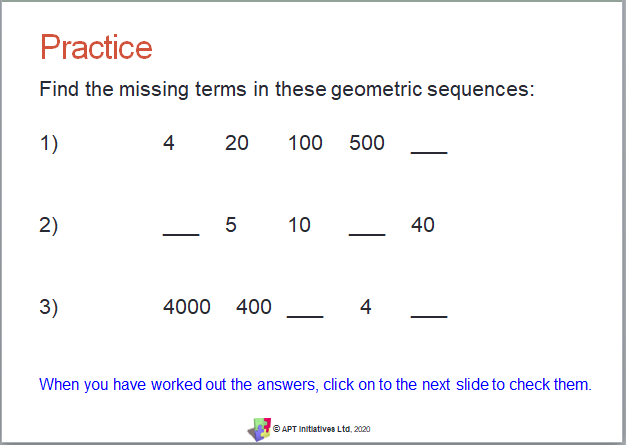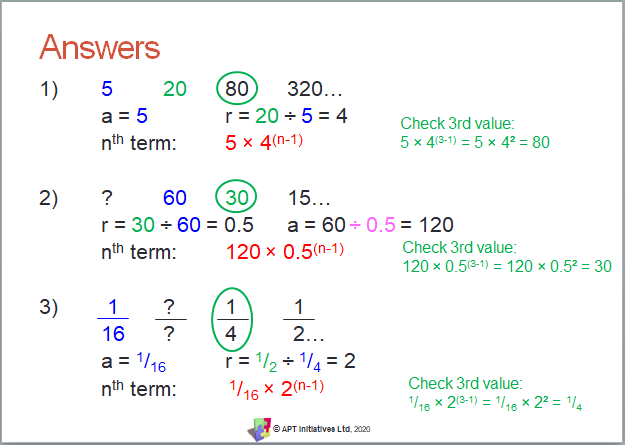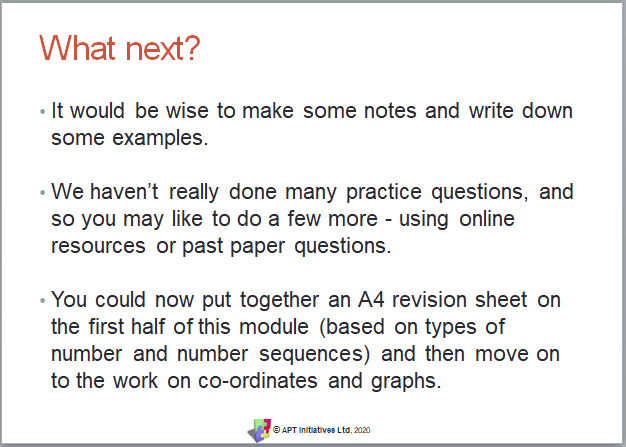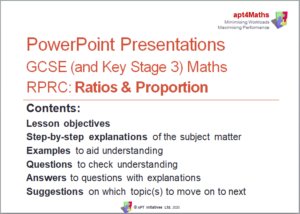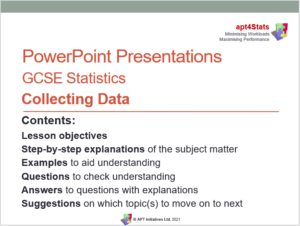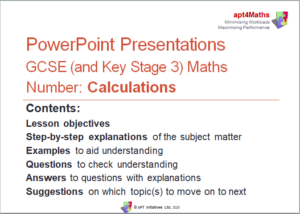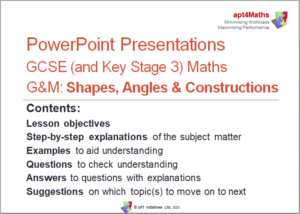apt4Maths: Set of 10 PowerPoint Presentations (Relating to Number AND Algebra) on Types of Number and Sequences for GCSE (and Key Stage 3) Mathematics
From £20.50 ex VAT
If you are a school/college and would like to place an order and be INVOICED later, please email sales@apt-initiatives.com.
This set of 10 PowerPoint Presentations, written by a highly experienced teacher (of 25+ years), senior examiner and reviser for Maths and Stats examinations, are designed for use by:
- any teacher – not necessarily a maths specialist – as part of their own delivery of lessons.
- students working independently.
They can be used by:
- cover teachers.
- students who are unable to attend their lesson in person.
Each PowerPoint Presentation includes:
- Lesson objectives
- Step-by-step explanations of the subject matter
- Examples to aid understanding
- Questions to check understanding
- Answers to questions, with explanations
- Suggestions regarding which topic(s) should be moved on to next.
Product Information
This set of 10 PowerPoint Presentations (183 slides, excluding Title Pages) covers the following topics relating to ‘Types of Number’ and ‘Sequences’:
- 01 Multiples, Factors & Prime Numbers (22 slides): Explains multiples, lowest common multiples (LCMs), factors, highest common factors (HCFs) and prime numbers.
- 02 Prime Factorisation (15 slides): Explains how to express a number as a product of its prime factors and how to find the LCM and HCF of several numbers once they have been expressed as products of their primes.
- 03 Squares, Cubes & Roots (21 slides): Explains square numbers, square roots and their link to the 2D shape, and explains cube numbers, cube roots and their link to the 3D shape.
- 04 Indices & Laws of Indices (25 slides): Explains positive and negative indices and the laws of indices.
- 05 Fractional Indices (8 slides): Explains fractional indices.
- 06 Surds (23 slides): Explains rational and irrational numbers, surds and surd laws, and how to rationalise denominators of fractions involving surds.
- 07 General Sequences (21 slides): Explains how sequences can be generated using written rules, number / function machines, practical situations and from expressions for the nth term.
- 08 Linear Sequences (16 slides): Explains how to find the next, previous or missing terms of a linear sequence, and how to find the expression for the nth term of a linear arithmetic sequence.
- 09 Quadratic Sequences (20 slides): Explains other types of sequences and how to find next or previous term and the expression for the nth term of a quadratic sequence.
- 10 Geometric Sequences (12 slides): Explains how to find the next or previous term of a geometric sequence, and how to find the expression for the nth term of a geometric sequence.

